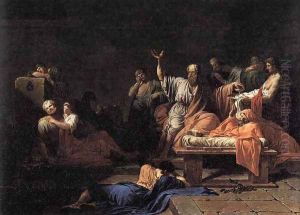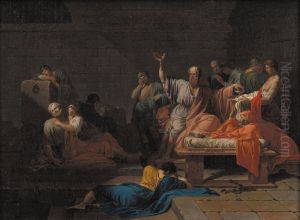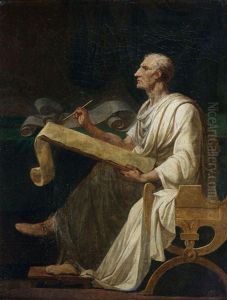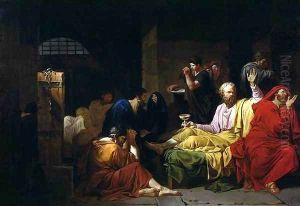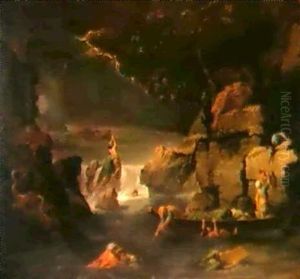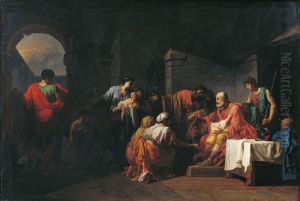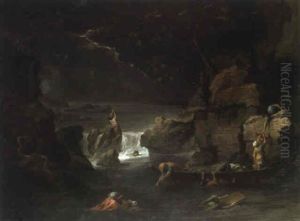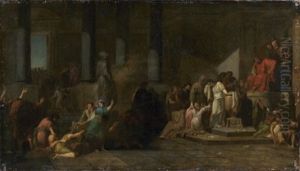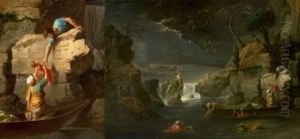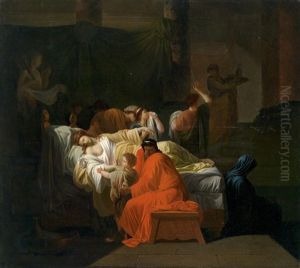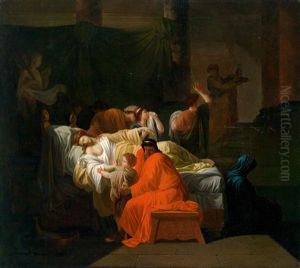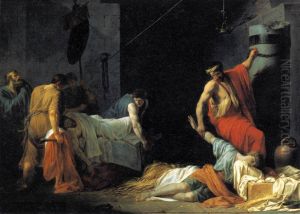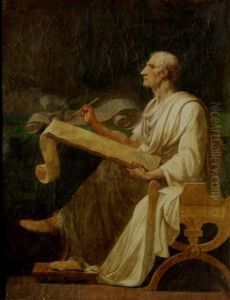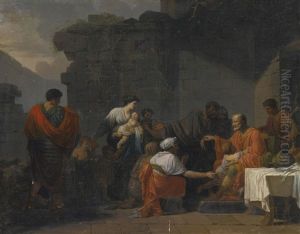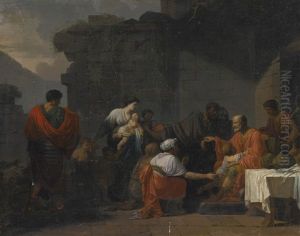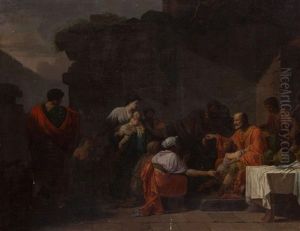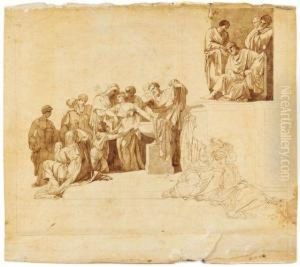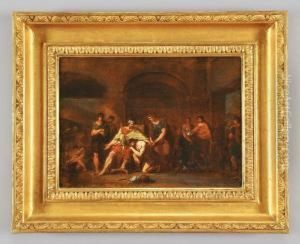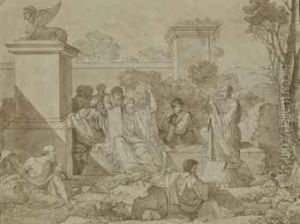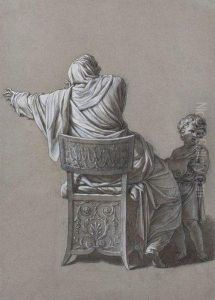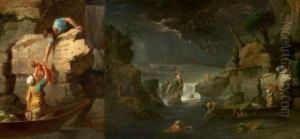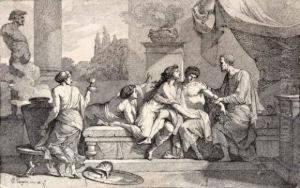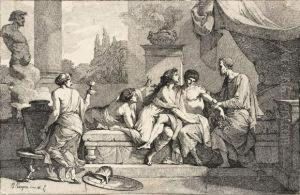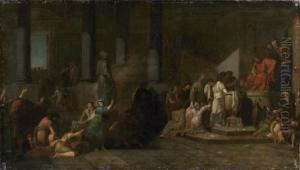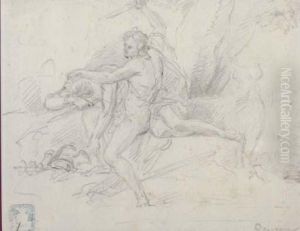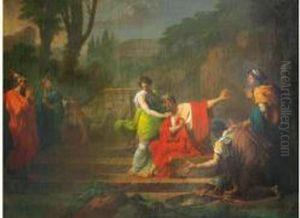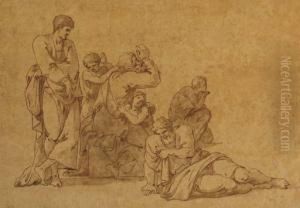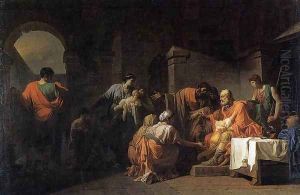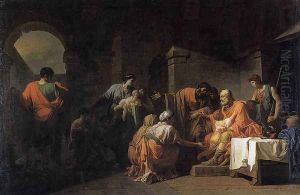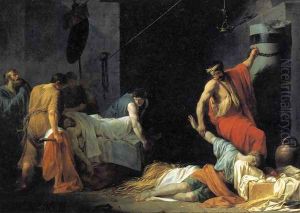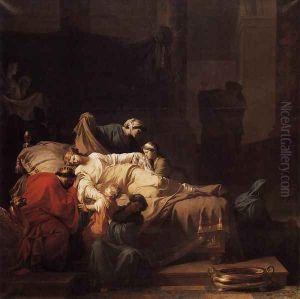Jean-Francois-Pierre Peyron Paintings
Jean-François-Pierre Peyron was a prominent French neoclassical painter born on December 15, 1744, in Aix-en-Provence, France. His body of work is characterized by its classical themes drawn from ancient history and mythology. Peyron's precise draftsmanship and clear compositions were reflective of the neoclassical movement, which sought to return to the purity of the arts of Rome and the Renaissance by rejecting the excesses of the Rococo style.
Peyron began his artistic studies at the Academy of Painting in Aix. In 1769, he moved to Paris to further his education and entered the Royal Academy of Painting and Sculpture. He won the prestigious Prix de Rome in 1773 for his painting 'The Death of Socrates' and subsequently spent time at the French Academy in Rome, where he was influenced by the works of classical antiquity and the Renaissance, as well as by the emerging neoclassical style of his contemporaries.
During his time in Rome, Peyron worked on honing his style and produced several notable works, including 'The Death of Alcestis' (1773) and 'The Rage of Achilles' (1781). His paintings were marked by their emotional restraint and use of clear, harmonious lines, which epitomized the neoclassical ideal. After returning to France, Peyron continued to receive significant commissions and held various academic positions. His artworks were exhibited at the Paris Salon, where he gained further recognition.
Peyron's influence extended to his role as an educator. He became a respected teacher at the Academy, and his teachings helped shape the next generation of neoclassical artists. However, despite his initial success, Peyron's later career was overshadowed by the rising star of his contemporary, Jacques-Louis David, whose works became the definitive expressions of neoclassicism in France.
Jean-François-Pierre Peyron passed away on January 20, 1814, in Paris. Although less celebrated today than some of his peers, Peyron's contributions to the neoclassical movement remain significant, and his works continue to be studied for their clarity of composition and historical themes.
